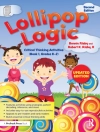The importance of Boske and Osanloo’s approach to identifying the crisis of bullying in our society lives within the personal stories shared in this book. Readers are reminded that victims of bullying are our own friends, neighbors and classmates, and those at every level in the community are challenged to be part of the solution. The hatred carried out by those who bully impacts all of us, not only the individual victims. Students, Teachers, and Leaders Addressing Bullying in Schools captures the tragedy victims face and the urgency of creating a new dialogue amongst our educators.
– Judy Shepard, Founder, Matthew Shepard Foundation
The most important experts on bullying are the students, parents, and educators who wrestle with its impact every day. In this book, Boske and Osanloo place them at the center of the dialogue to design lasting solutions and spur the national conscience into action. Bias-based bullying complicates systemic solutions by activating the “isms” and “phobias” that plague us all. The bold collective behind this book calls us to get over our own stuff and double down on our efforts to create safe and affi rming schools for all students.
– Eliza Byard, Ph D, Executive Director, GLSEN
The brilliance and boldness of this book lie in two distinguishing features. First, inspired by the Boske and Osanloo’s vision, the contributors discuss bullying as precisely what it is: not an interpersonal challenge, not a cross-cultural tension, not an issue that can be conflict-mediated away, but a social justice concern that is connected to bigger societal conditions and injustices. Secondly, Boske and Osanloo reject the idea that academics are the experts of everybody’s experiences, and so they open the space on the pages of their book to the targets of bullying and their on-the-ground advocates. The result is revolutionary. If you think you understand bullying, I dare you to read this book.
– Paul Gorski, Founder, Ed Change, & Associate Professor, Integrative Studies at
George Mason University
Daftar Isi
Foreword; Uncomfortable Truths: An Introduction to Bullying in U.S. Schools; Bullied: What’s Going on?; What Are You?: The Hidden Curriculum and Microaggressions Associated with What It Means to Be “Different”; Part 1: Voices from Youth in Schools; A Young Man’s Journey; You Are Worth It; Does It Really Matter If Nobody Is Around?; I Was the Shy and Awkward Girl; I’m a Little Bit Darker; How Do You Feel about Bullying in Schools?; Standing up to the Popular Girl; School Violence; Being “White”; What Makes Me Beautiful; Learning to Love One Another; T.H.I.N.K.; You Just Get Used to It; Part 2: Voices from Concerned Families and Community Members; Becoming Mrs. Baker; Dyke, Dyke, Dyke!;Something Soft; Chaos and Order; Bullied at the Intersection: Growing up Gay in the Black Church and Rural Ohio; Masculine of Center; I Was Prime Pickn’; Bullies in Diapers: Techniques to Extinguish Bullying Behaviors in Young Children; Bullying: The Synthetic Cool; Katie; Part 3: Voices from Educators and Scholars in the Field; Bullying: Schoolhouse and Workforce Considerations for Students and Teachers; The Power to Move Others: Dancers Addressing Bullying; Dare Greatly to Enhance Your School’s Climate through Acceptance, Relational Trust, and Creating a Sense of Belonging; The Quiet Roar; Looking to the Future – Exploring the Need to Address Bullying in Higher Education; The Elephant in the School: Recognizing Bullying in Other Forms; First Things First: A Middle School Model of Comprehensive Supports; A Case Study of the Gay-Straight Alliance’s Presence at a Public Urban High School; The Relation of Physical Discipline to Bullying Behaviors across Different Families and Ethnicities; Addressing Bad Behavior with Good Science: Research Implications for School Policies and Intervention Programs; Bridge Building: Promoting Culturally Responsive Practices and Policies to Address Bullying in K-12 Schools; Concluding Thoughts:President and CEO, Moving beyond Prejudice; Contributors.












